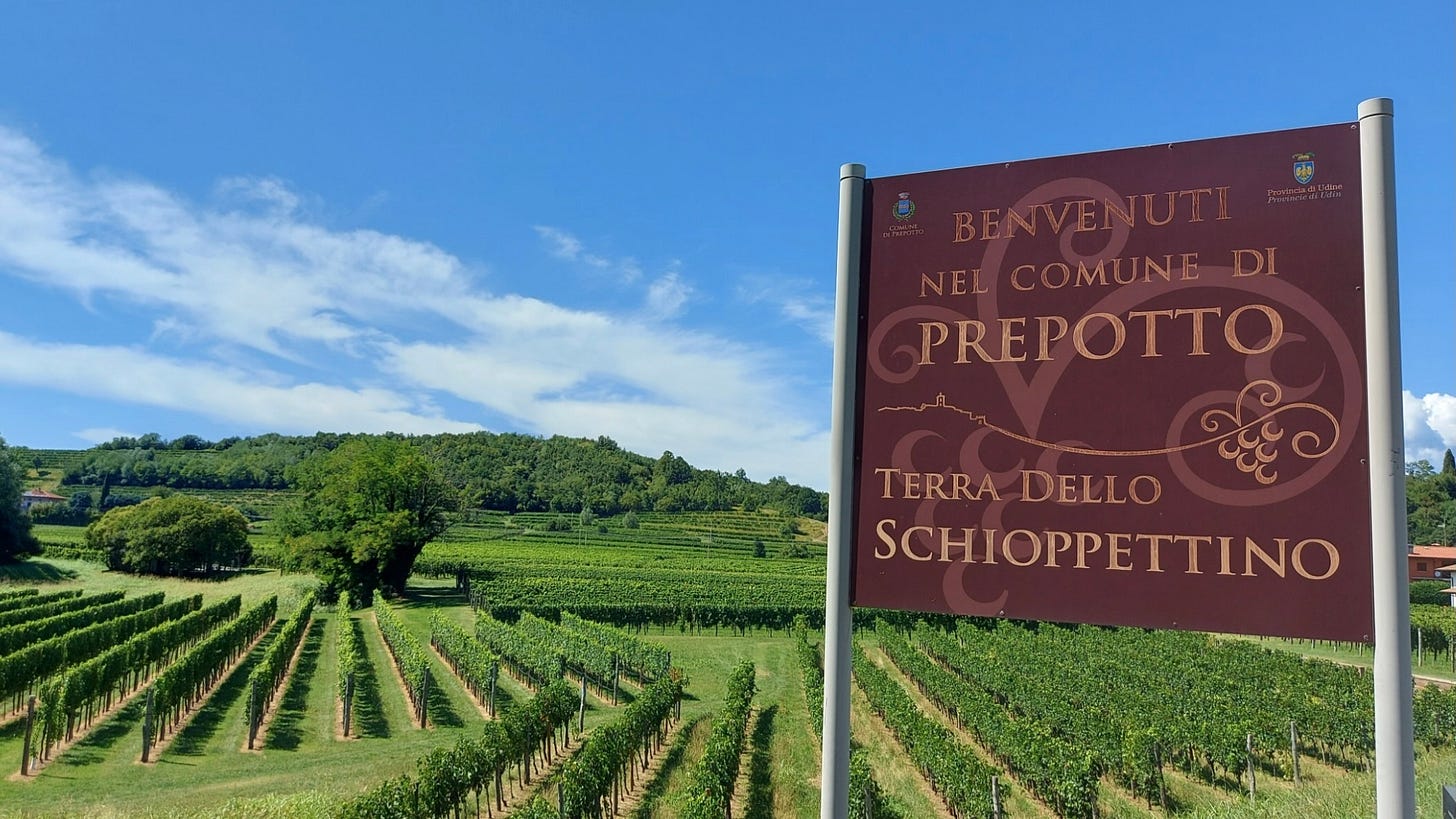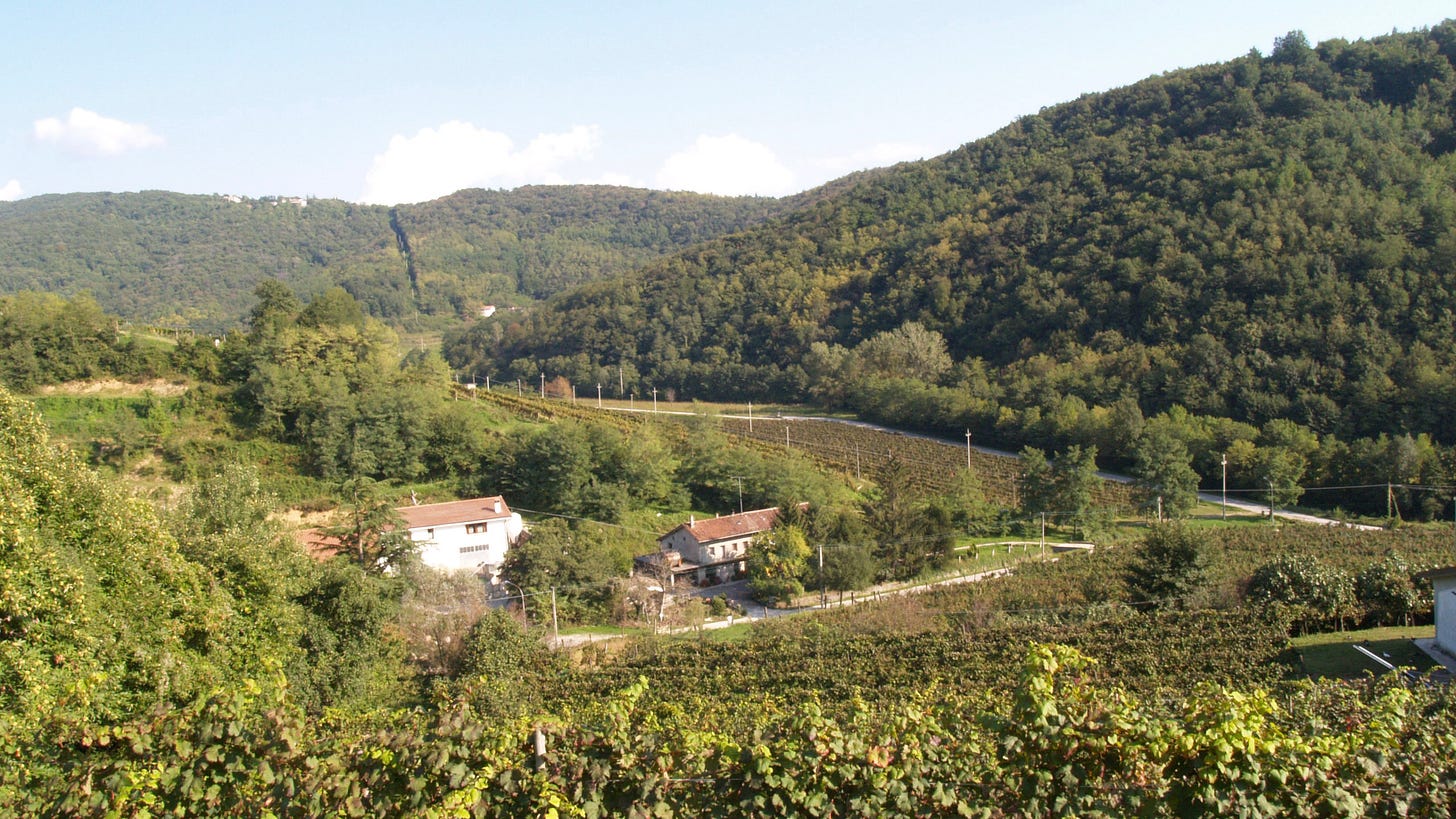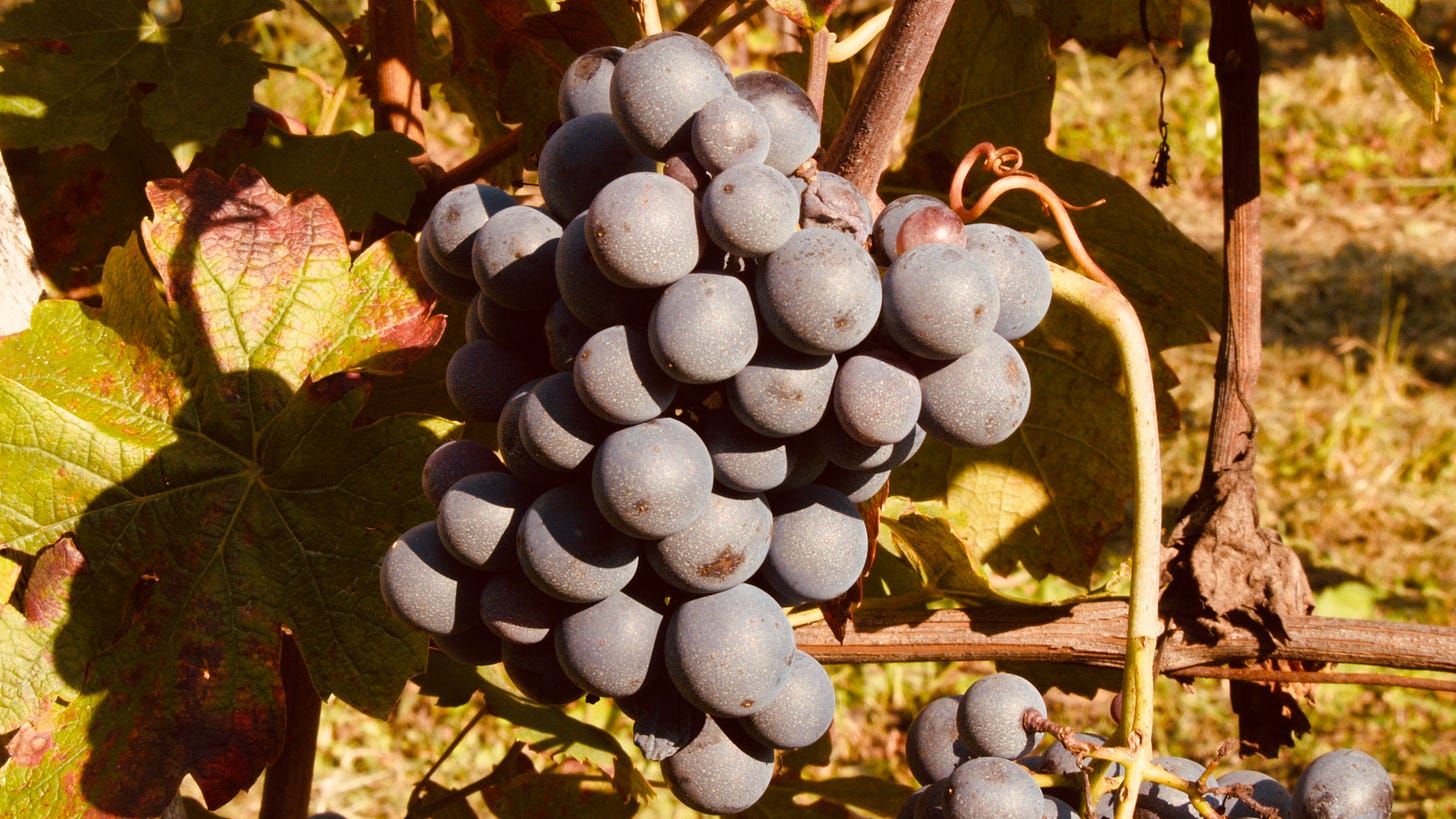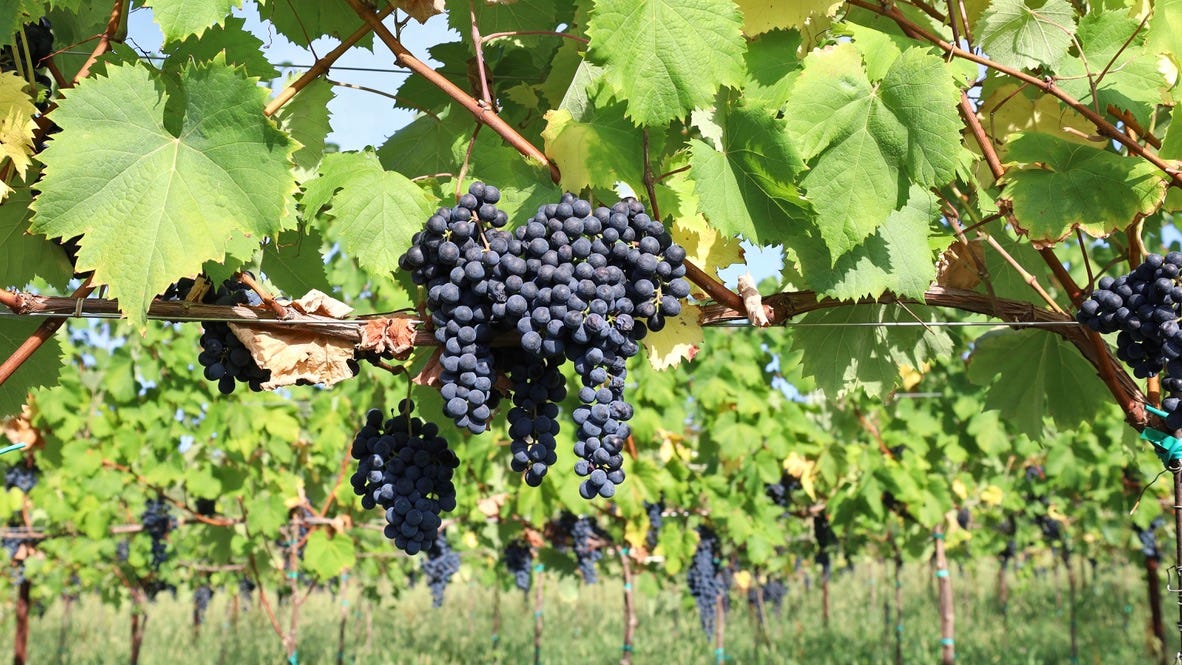It's Easier To Love Schioppettino Than To Say 'Schioppettino'
The comeback of Fruili's obscure reds makes the case for the importance of native varieties.
Friuli, in northeastern Italy, is home to 17 indigenous grape varieties—more than any other Italian region. For Massimo Durì, winemaker and fourth generation owner of Antico Broilo winery in Prepotto, these local varieties are the best expression of the area near Italy’s border with Slovenia.
“It’s like when you have a son or daughter, they are able to tell the truth of where they come from far better than someone else,” Durì said. “Grapes born here behave best here.”
Only 23 percent of the wines made in Friuli are red, but they just might outshine their more well-known white counterparts. The majority of red wine production in Friuli comes from the Colli Orientali del Friuli zone, a liminal space both geographically and climatically. It is nestled between the Adriatic coast and the foothills of the Alps with Slovenia a few kilometers to the east and Austria just to the north. All the while it’s considered a Mediterranean climate. These in-between conditions create the perfect balance of unique flavors and aromas that their native grapes are known for.
Schioppettino, pignolo, and refosco are now the star red grapes here. But it’s lucky for us that these local varieties clawed their way back from being considered legally extinct after phylloxera and two world wars took a huge toll on the area.
“During WWI and WWII, Friuli was on the frontlines as it is not far from the Austrian border,” Ivan Rapuzzi, from Ronchi di Cialla winery in Prepotto, said. “For 50 years, the people of Friuli just tried to survive.” Winemaking was put on the back burner during the first half of the 20th century, and many vineyards went neglected. Some of the brilliant indigenous varieties were ripped out, and shriveled into obscurity.
When local vineyards were replanted after the wars, winemakers favored the more lucrative international varieties like merlot, cabernet franc, and cabernet sauvignon. By the 1960s, the schioppettino and pignolo vines, along with others , were considered extinct. It was actually illegal for the region’s producers to harvest and bottle them.
Paolo Rapuzzi, Ivan’s father and founder of Ronchi di Cialla winery, always believed in the importance of history and respecting the past. This idea drove him to revive the schioppettino grape in the early 1970s, which once flourished in this area. Along with his wife Dina, he bought land in the Cialla Valley, where the winery is now based. After coming across some vines on the property, he discovered they were the believed-to-be-extinct grape.
With help from the locals he tracked down 60 indigenous schioppettino plants within a few square miles of one another and replanted two hectares of the grape, saving it from extinction. To this day, Ronchi di Cialla uses these vines to make their wines. The Cialla Valley is now considered its own subzone of the Colli Orientali del Friuli appellation for its unique soils, east to west orientation, and the cultivation of its native grapes.
The influence of Paolo’s first plantings of schioppettino now have an unprecedented reach. All the schioppettino that is cultivated around the world started from these plantings. It has even made its way to UC Davis in California and winemakers like Steve Matthiasson have made wines from these iconic cuttings.
But why save the indigenous varieties in the first place? They are certainly not as lucrative as other international varieties planted here. “There is no market for schioppettino,” Ivan Rapuzzi said, “but there are people who love schioppettino.” And that makes its production worthwhile.
Though great in their own right, drinking cabernet franc or merlot from Friuli misses the essence of what this place has to offer. “These [indigenous] varieties have been selected by nature, and there is a synergy between climate, soil, plants, which needed centuries to have the perfect expression,” Ivan Rapuzzi said.
What Ivan Rapuzzi at Ronchi di Cialla undoubtedly proves is that terroir is driven by the people who work with it and respond to it just as much as it is driven by the natural forces of a place. In the end, terroir has the power to influence and inspire, like it did with Paolo, Ivan’s father, when he stumbled across those abandoned vines of schioppettino many years ago.
Now, if you have never tried the local reds from Friuli, let’s go down that rabbit hole:
• Schioppettino (pronounced ski-ohp-pet-teen-oh) has a wonderful structure with mellow tannins and a low ABV. It’s a thin-skinned grape, allowing it to grow in cooler temperatures, which helps create crisp acidity and freshness on the palate. Ivan Rapuzzi says it is an expression of the Colli Orientali terroir, as it has “the opulence and richness from the Mediterranean but the lightness from the Alps and the spiciness from the eastern winds.”
• Pignolo (pronounced peen-yo-lo) also nearly went extinct. It was the Dorigo family who helped revive this variety in the 1970s. Catching a glimpse of pignolo at your local retail shop is a rare sight these days. It’s the most structured red from Friuli, with a jammy nose of dark cherry and blackberry and the unmistakable scent of leather. Local winemaking law states that producers must age this high-tannin wine a minimum of three years, but most local winemakers wait closer to ten years before releasing a vintage. This wine is sure to age just as long, if not longer, than any Barolo or Brunello.
• The dark-skinned refosco grape ripens late, like cabernet sauvignon. Also known as tazzelenghe or terran depending on where it’s from, it is even grown in parts of Croatia and neighboring Slovenia. Refosco (pronounced reh-foh-skoh) is typically dark in color with notes of pepper and dark cherry and a nose that can range from smoke to more herbaceous aromas of oregano and dried sage. Its mouthwatering acidity would make anyone thirsty for more.
Four from Friuli
Our bottle picks and tasting notes are available to paid subscribers only. Upgrade today with a special discount.





